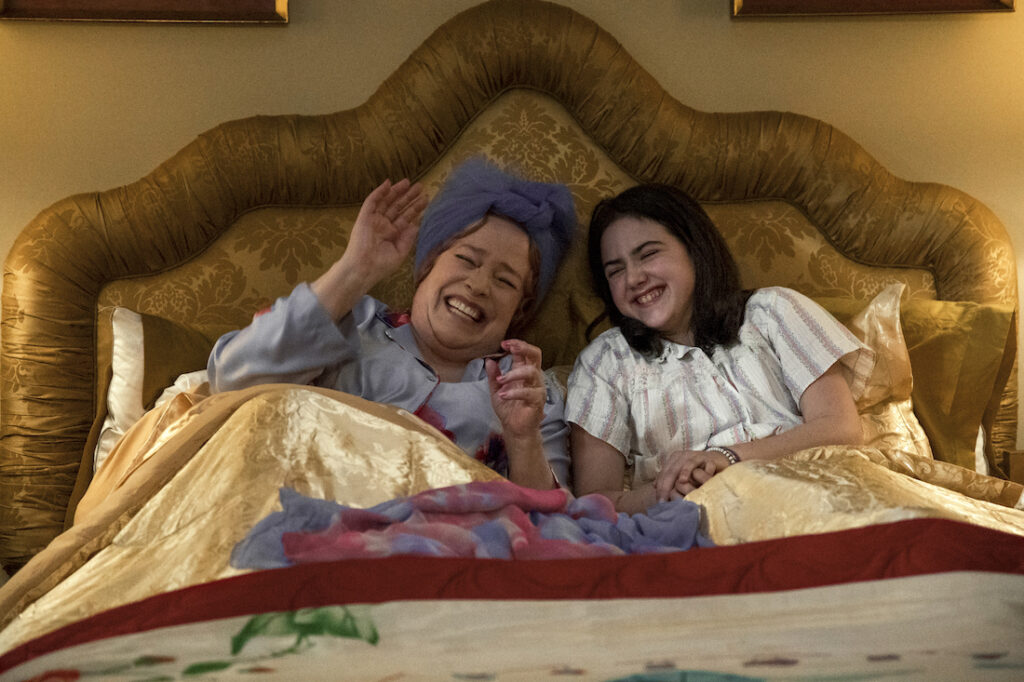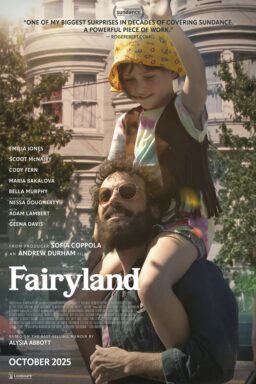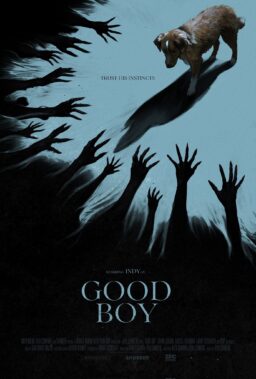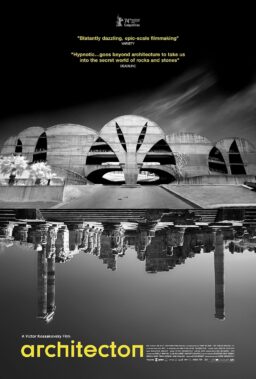Judy Blume’s Are You There God? It’s Me, Margaret. has been a foundational text for generations of young girls for 50 years. It is also one of the most perennially banned books for the same reason. Narrated by its 11-year-old title character, the film is frank about the upheavals of puberty and the pressures of middle school. It was revolutionary when it was first published in 1973, and it’s still controversial.
Fans’ passionate attachment to the book meant that its first adaptation as a film had to be completely authentic. Steve Saklad, the film’s production designer, helped bring the book to life with pitch-perfect 1970s settings for Margaret and her parents, who are transitioning from Manhattan to the suburbs of New Jersey, Margaret’s outspoken, extroverted grandmother Sylvia, and her seemingly confident friend Nancy. In an interview, Sakland talked about the four “shows” within the film that filled the “hole in [his] heart” for musical theater, the props only the young actors got to see, and the details he used from his own grandmother to furnish Sylvia’s apartment.

I know we’re here to talk about “Margaret,” but I have to tell you how much I love your designs for “Barb and Star Go to Vista Del Mar.”
It was bliss, and in my mind, it was a pure musical.
And in this movie, we got to do four theater scenes. I got to do another musical! I’m trained in theater, so theater is my background. And I worked in New York in musical theater on Broadway for ten years before I moved out west and started doing movies.
Where did you grow up, and what did you study?
I grew up in the Eastern seaboard, in suburban Connecticut and suburban Pennsylvania, and I went to Yale Drama School for theater design. So, you study costume sets and lights. Came to New York in 1981, so about ten years after our story in this film takes place. And I worked most of that time assisting the premier designers of Broadway shows, Broadway plays, and musicals. The hole in my heart is that I’m not in New York now designing theatre. I love what I do, but any show like “Barb and Star” or “Margaret” that can give me a chance to design theatre in the movie, oh, I’m in heaven. It’s everything I was trained to do.
One detail from the ’70s I especially loved in this movie was the rec room with that sliding accordion door. I remember those!
We did install that. That wasn’t there. And Kelly Fremon Craig, our director, used it so well because it meant so much when that door creaked open or closed. I was 14 in 1970 when this film takes place. So, I had this visceral memory. And we were living in Pennsylvania at that point. But we would come up to New York once or twice a year. And driving into Greenwich Village and seeing the sort of hippie folk singers on the sidewalks and stuff is something I’ll never forget. It was not quite like it ever shows up in the movies. There was this sort of weird, small-town feeling in Greenwich Village that I remembered. And it wasn’t big and shiny and corporate or expensive like it is today. And so, I felt like the Greenwich Village that the Simon family starts in has to feel warm and special and grubby but full of life, full of creativity. So, that was one of the first sets to solve was that street scene, when the family is moving to New Jersey at the beginning of the story.
We see it from Margaret’s bedroom, and then we see it down on the street when they say goodbye to Sylvia and drive away. It was [originally] a much longer scene, the scene with Sylvia. We finally found a great piece of the street half hour outside of Charlotte, North Carolina. And so, we transformed six facades into what we needed. And between the extras and the cars and the ice cream vendors on the street and everything else, it turned into the thing that was the closest to my memory.

We got so much of Sylvia’s character from her apartment.
My family is Jewish so when I got to do Sylvia’s Jewish grandma’s apartment on the Upper West Side I sort of knew exactly where that should go. There’s a Hadassah coin box on the mantel, and there’s a tuba on the wall from her deceased husband to show us she wants her history around her.
The Upper West Side apartment was a large apartment with very few good details, except it had a great Tudor fireplace. That was what we hooked the thing on. That was another one of those sets where we had a location that was very beige. We built the wall panels that contained the moldings and all the wallpaper, and we added casings and chair rails, and so forth. This was going to be the strongest color story in the movie. We actually went strong into tomato reds, gold, black, and white, with gold stripes on the draperies. We installed an enormous amount of construction and paint, wallpaper coverings, pilasters, French doors, and then all that decor, all the drapes, and the furniture to tell the story of 40 years of this woman’s life in this great apartment. Every detail helped us say, “Here is a font of creativity bursting to express itself.”
She’s fearless. And can express herself in a way nobody else in the movie can. It’s also warm and cozy. And you can see the travel she had done with Japanese screens and treasures from her life. We had show tunes albums, assuming she had seen the first performances of The King and I and Man of La Mancha. And so, those albums are displayed. And there’s the clipped-on theater ticket on the outside of the album cover, which my aunt used to do. So, that’s Sylvia in her fullest life.
We learn a lot about Margaret’s mother, Barbara, from the apartment she leaves and her difficulty making up her mind about the furniture in her new house in the suburbs.
Barb’s apartment in Manhattan is filled with art and art supplies, and then she has to pack that all up and put it in the basement of the new house. And it waits till the very end of the movie, when she finally brings the art back into the living room. And again, it’s all this journey through how to safely express your creativity and how to find your identity. And that’s Margaret’s journey, and that’s Nancy’s journey. That’s the journey of each of the ladies and girls in the show; it’s about them finding or failing to find their inner spark, their inner life.
It was Kelly Fremon Craig, our director/writer, who added Barb’s hesitation to furnish the living room. It wasn’t in the book. There’s very little about the parents in the book except how they overlap with Margaret’s story. But Kelly wisely saw this as a slightly bigger canvas.
Nancy’s mother, Mrs. Wheeler, is one person who fails to grow and become more authentic over the course of the film. She can’t become another person than who she’s trained to be. But each of the other characters has a different way of expressing creativity. So, we got to show Barb in her element in Manhattan, mostly a black-and-white set. The painting, the casings, and everything were all black and white. And then we get to this New Jersey environment where she’s alien and doesn’t know how to make her way. And we started with an earth-tone story. The walls are beige, grasscloth, and it’s amber and sage in that main downstairs series of rooms. She gets rid of her New York furniture almost immediately. And then we’re left with sitting on cushions on a folding porch chair for half of the movie.
And then you see her trying these different aesthetics. She spends time at the mod furniture store. She sees that Ethan Allen colonial furniture suite in a window, and two scenes later, she’s moved it in just in time for her parents to show up. And even then, it’s not right. That is what she wants her parents to see, not what she is until her art finally returns in the final scene. And suddenly, we can say here is a fuller, more integrated Barbara who has found her way.

When you go into somebody’s house, what details do you look at that you file away?
One of the hardest things that I keep being asked to design is kids’ bedrooms. It’s funny because I haven’t lived in a kid’s bedroom since my own. So, the living rooms and the sort of rumpus rooms and stuff, we can always arrive at something that means things to people. But kids’ bedrooms are so in demand for the movies I end up having to do. I think I’ve done probably six or eight, and they’re so unique and they’re so not the cliché that you keep seeing on TV shows. And so I like to see kids’ bedrooms and what they actually put on the walls and the haphazardness that arrives at a kid’s bedroom design because there’s no decorator involved, there are no over-creating rules.
So, for Nancy’s bedroom, Mrs. Wheeler did the downstairs of the house and the downstairs of the house is very strict. I’ve been calling it charm with ice underneath. It has icy silvers and blues, and everything has piping and those pinch-pleated sheers that are across entire walls of the living room. But you get upstairs and poor Nancy is still living in the bedroom that was designed for her when she was seven or eight. And so, it’s ruffles and it’s the lavender kind of color schemes that we would find sickening now. And it’s got floral wallpapers crawling up the walls like Sleeping Beauty’s castle or something.
And Nancy has to do her own rebellion in her room. So, there are these crazy pops of orange or chartreuse and the pictures of her fashion icons. Twiggy is on the wall in a prominent place and a few other of the fashion models at the time that she would be imitating when she puts her makeup on. So, her rebellion and the sort of mess that we would put underneath the ruffled slipcovers of the bed or the ruffled skirt of the end table. So, there was the crap that Nancy didn’t want the world to see that she would stick under those dust covers. We would show them to the actors and stuff so they would know that underneath Nancy’s facade is this roiling morass of insecurities and pain in a way, but that she’s covered up with this outer shell.
We had a tricky time arriving at Margaret’s bedroom. As soon as I knew what our exterior was, I knew I wanted to add angled ceilings to give her this sheltered feel to where her bed is placed in the room. And we had created this portal of windows around her bed so that sunlight could stream in, moonlight could be there, we could see the change of the seasons through the change of the leaves around her bed, and there could be this sort of benediction as she kind of makes her way through her questioning of God, that we would feel God around her.
And we had decided that she loves astronomy, and it matches her search for the cosmos in a tangible way. So, we had the night constellation maps on these angled walls over her bed so she could lie in bed and look up at the stars inside her room. And there were little Styrofoam planets that were hung over her bed. So, we felt that that was as on the nose as we could ever be with her questioning of her place in the cosmos. And we also did an interesting thing with the wall colors. We decided that Margaret’s incomplete. She’s at a beginning of finding out who she is. And so maybe her walls aren’t one color either. And we ended up painting two walls, one butter yellow and one wall pale blue, and one wall pale gray as if that’s the way the previous owners had left it so that there is no final design to her room. It was still yet to be kind of created.
You got to draw from your theater background in this film.
Yes! We got to do four actual theater scenes. I don’t know if anybody would count them that way, but I did. We got to do a very quick play in Margaret’s camp, which we did a whole set for. And we got to do the Rockettes at Radio City, which we actually had to create. The VFX team created the grand drape and a bit of Rock Radio City around our set. But we were in fact having 16 precision dancers trained with this fantastic Rockettes choreography. And you only see a little piece of it in the movie, but oh my God, they had a four-minute dance. Really it was so exciting that day just to see these professionals do what they do. There’s a Nativity play at Christmas. And Sylvia takes Margaret to The Pirates of Penzance. That was created in a parking lot. We basically built the Delacorte stage and the scenery. I was so happy that I got to do traditional scenery. And we created this sort of toy theater aesthetic of the proscenium with Union Jacks as curtains on the proscenium and then the bulbs that would chase in time with the music. We actually had a few trees in camera in our parking lot, and then VFX created the rest of Central Park and the castle.
And I’ll tell you that day seeing the cast, the wonderful singer-dancers in Ann Roth’s gorgeous costumes that exactly match the colors of our set, and seating areas because we knew Delacorte doesn’t have any orchestra pit. So we created a place for musicians on either side of the stage. And when the playback started, and Major-General comes out with his umbrella and the whole thing takes place in front of us, and the lights start chasing, the bulbs start chasing on the proscenium, I was in bliss. I mean, this is what I’ve always wanted to do.
“Are You There God? It’s Me, Margaret.” is available in theaters on April 28th.












